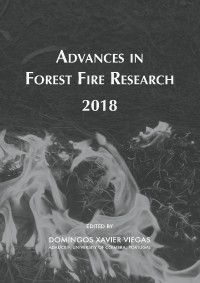Please use this identifier to cite or link to this item:
https://hdl.handle.net/10316.2/44625| Title: | Do we need weather prediction models to account for local weather modifications by wildland fires? | Authors: | Kochanski, Adam Mallia, Derek V. Fearon, Matthew G. Brown, Tim Mandel, Jan Vaughan, Joseph K. |
Keywords: | smoke;air quality;inversion | Issue Date: | 2018 | Publisher: | Imprensa da Universidade de Coimbra | Journal: | http://hdl.handle.net/10316.2/44517 | Abstract: | During the summer of 2015, a number of wildfires fires burned across northern California, which produced significant smoke across the region. Smoke from these wildfires hindered fire-fighting efforts by delaying helicopter operations and exposed communities to high concentrations of atmospheric pollutants. Nighttime inversions are common across the western U.S. and usually mix out during the early afternoon as a result of convective mixing from daytime heating. However, atmospheric conditions in valleys adjacent to the aforementioned wildfires remained stable throughout the afternoon. It is hypothesized that the smoke from nearby wildfires enhanced atmospheric stability due to surface cooling caused by reduced incoming solar radiation, and possibly by warming aloft due to absorption of the incoming solar radiation in the smoke layer. At the same time, mid-level heating from the wildfire could have increased atmospheric stability and extended the duration of the inversion. In this study, we utilize the WRF-SFIRE-CHEM modeling framework, which couples an atmospheric, chemical, and fire spread model in an effort the model the impacts of smoke on local inversions and to improve the physical understanding behind these smoke-induced inversion episodes. This modeling framework was used to simulate the Route and South Complex fires between August 10 – August 26th, 2015. Preliminary results indicate that wildfire smoke may have significantly reduced incoming solar radiation, leading to local surface cooling by up to 2-3 degrees. Direct heating from the fire itself does not significantly enhance atmospheric stability. However, mid-level warming was observed in the smoke layer suggesting that absorption in this layer may have enhanced the inversion. This study suggests the including the fire-smoke-atmosphere feedbacks in a coupled modeling framework such as WRF-SFIRE-CHEM may help in capturing the impacts of wildfire smoke on near-surface stability and local inversions. | URI: | https://hdl.handle.net/10316.2/44625 | ISBN: | 978-989-26-16-506 (PDF) | DOI: | 10.14195/978-989-26-16-506_108 | Rights: | open access |
| Appears in Collections: | Advances in forest fire research 2018 |
Files in This Item:
| File | Description | Size | Format | |
|---|---|---|---|---|
| do_we_need_weather_prediction_models.pdf | 1.39 MB | Adobe PDF |  |
Items in DSpace are protected by copyright, with all rights reserved, unless otherwise indicated.
